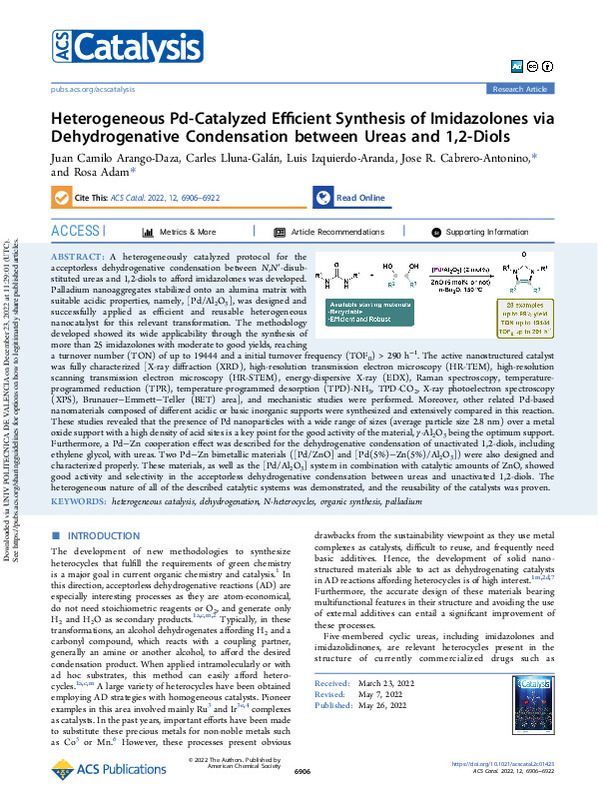JavaScript is disabled for your browser. Some features of this site may not work without it.
Buscar en RiuNet
Listar
Mi cuenta
Estadísticas
Ayuda RiuNet
Admin. UPV
Heterogeneous Pd-Catalyzed Efficient Synthesis of Imidazolones via Dehydrogenative Condensation between Ureas and 1,2-Diols
Mostrar el registro completo del ítem
Arango-Daza, JC.; Lluna-Galán, C.; Izquierdo-Aranda, L.; Cabrero Antonino, JR.; Adam, R. (2022). Heterogeneous Pd-Catalyzed Efficient Synthesis of Imidazolones via Dehydrogenative Condensation between Ureas and 1,2-Diols. ACS Catalysis. 12(12):6906-6922. https://doi.org/10.1021/acscatal.2c01423
Por favor, use este identificador para citar o enlazar este ítem: http://hdl.handle.net/10251/193501
Ficheros en el ítem
Metadatos del ítem
| Título: | Heterogeneous Pd-Catalyzed Efficient Synthesis of Imidazolones via Dehydrogenative Condensation between Ureas and 1,2-Diols | |
| Autor: | Arango-Daza, Juan Camilo | |
| Fecha difusión: |
|
|
| Resumen: |
[EN] A heterogeneously catalyzed protocol for the acceptorless dehydrogenative condensation between N,N'-disubstituted ureas and 1,2-diols to afford imidazolones was developed. Palladium nanoaggregates stabilized onto an ...[+]
|
|
| Palabras clave: |
|
|
| Derechos de uso: | Reconocimiento (by) | |
| Fuente: |
|
|
| DOI: |
|
|
| Editorial: |
|
|
| Versión del editor: | https://doi.org/10.1021/acscatal.2c01423 | |
| Código del Proyecto: |
...[+] |
|
| Agradecimientos: |
This work was supported by the SEJI program funded by Generalitat Valenciana (Subvencions Excelencia Juniors Investigadors, grants SEJI/2019/006 and SEJI/2020/013), RETOS I+D+I program from MICINN (PID2019-109656RA-I0/AE ...[+]
|
|
| Tipo: |
|









